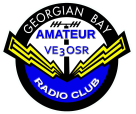2021-05-09, 09:14:27
There are three problems with Winlink:
1. RMS/Winlink Express only runs on a MS-Windows system. There is a Linux-based client called "Pat" but I couldn't get it to work.
2. There are insufficient RMS servers and many are poorly maintained (based on personal experience). PiGate won't help unless there are multiple systems running 24/7/365.
3. Email lacks composition discipline. Spelling, grammar and punctuation can alter the intent of a message. For example "Winlink" is a registered trademark. But, in this forum it has also been referred to as "win link". There is an old British army joke about message corruption. Sent: "send reinforcements we're going to advance". Received: "send three and four pence we're going to a dance" (three and fourpence is a reference to money used prior to 1971). Emergencies require precision and for that reason agencies use structured forms.
I dropped Winlink for all of those reasons. NBEMS does not require any proprietary software and it runs seamlessly on VHF and HF without any custom hardware or configuration changes. The NBEMS FLDIGI suite is open source, very powerful and constantly updated. It also runs on any platform. Many different modes and speeds can be used to accomodate different propagation conditions.
NBEMS incorporates all the custom forms used by the NTS, Red Cross and other emergency support organizations. Winlink just sends email.
I contest the view that Winlink is the "preferred" system. NBEMS is widely used in the US. Winlink may be preferred by RAC but IMHO RAC has a poor record of delivering feet-on-the-ground emergency communications. RAC excels only in creating a multi-level structure of emergency managers many of whom are inactive "due to Covid". I should add that I am a RAC member and support their other work.
Now let's analyze what constitutes an "email". Email comprises two components; metadata (header fields; to, from, subject etc) and the message body. For transmission over radio, both the metadata and message body can be combined as in a NTS Radiogram.
The National Traffic System (NTS) carries thousands of messages every day. It can be used to carry messages from a disaster area to another area where infrastructure is intact. Radiogram traffic can be cut and pasted into an Internet email if desired.
So perhaps the pursuit of a solution for email over radio is wrong-headed. We should be looking for a solution for sending accurate messages over radio. It has been commented that someone in a burning building doesn't have time to send a Radiogram. True, but support workers outside the burning building don't have time to send requests for assistance twice because of ambiguity in the first message. Structured message forms enforce composition discipline; email does not.
1. RMS/Winlink Express only runs on a MS-Windows system. There is a Linux-based client called "Pat" but I couldn't get it to work.
2. There are insufficient RMS servers and many are poorly maintained (based on personal experience). PiGate won't help unless there are multiple systems running 24/7/365.
3. Email lacks composition discipline. Spelling, grammar and punctuation can alter the intent of a message. For example "Winlink" is a registered trademark. But, in this forum it has also been referred to as "win link". There is an old British army joke about message corruption. Sent: "send reinforcements we're going to advance". Received: "send three and four pence we're going to a dance" (three and fourpence is a reference to money used prior to 1971). Emergencies require precision and for that reason agencies use structured forms.
I dropped Winlink for all of those reasons. NBEMS does not require any proprietary software and it runs seamlessly on VHF and HF without any custom hardware or configuration changes. The NBEMS FLDIGI suite is open source, very powerful and constantly updated. It also runs on any platform. Many different modes and speeds can be used to accomodate different propagation conditions.
NBEMS incorporates all the custom forms used by the NTS, Red Cross and other emergency support organizations. Winlink just sends email.
I contest the view that Winlink is the "preferred" system. NBEMS is widely used in the US. Winlink may be preferred by RAC but IMHO RAC has a poor record of delivering feet-on-the-ground emergency communications. RAC excels only in creating a multi-level structure of emergency managers many of whom are inactive "due to Covid". I should add that I am a RAC member and support their other work.
Now let's analyze what constitutes an "email". Email comprises two components; metadata (header fields; to, from, subject etc) and the message body. For transmission over radio, both the metadata and message body can be combined as in a NTS Radiogram.
The National Traffic System (NTS) carries thousands of messages every day. It can be used to carry messages from a disaster area to another area where infrastructure is intact. Radiogram traffic can be cut and pasted into an Internet email if desired.
So perhaps the pursuit of a solution for email over radio is wrong-headed. We should be looking for a solution for sending accurate messages over radio. It has been commented that someone in a burning building doesn't have time to send a Radiogram. True, but support workers outside the burning building don't have time to send requests for assistance twice because of ambiguity in the first message. Structured message forms enforce composition discipline; email does not.
John VA3KOT
Blog: HamRadioOutsideTheBox.ca
Blog: HamRadioOutsideTheBox.ca




